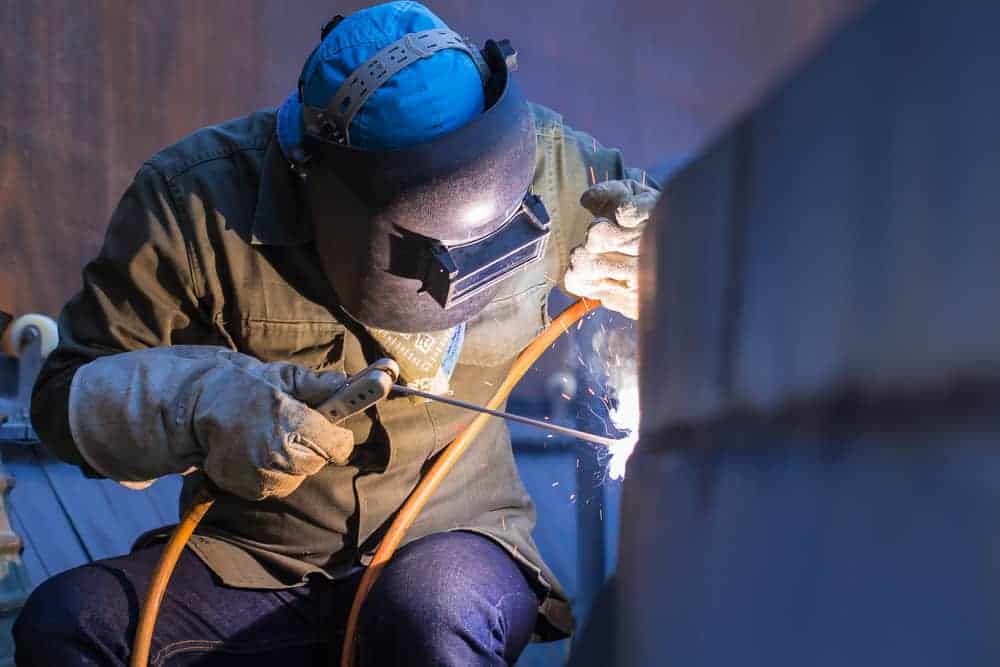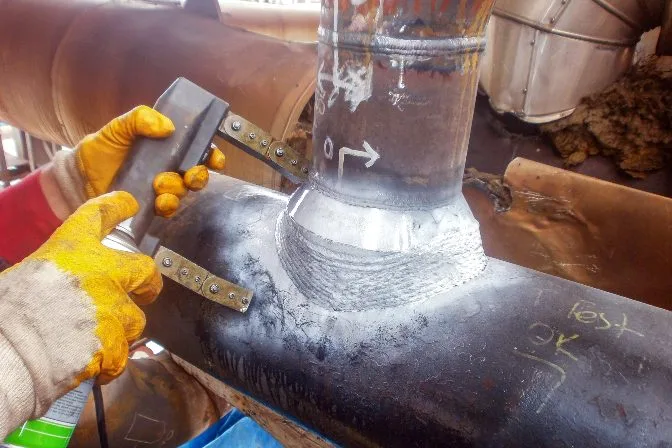Checking Out the Basics of Welding Evaluation: An In-depth Exam of Processes, Devices, and the Significance of High Quality Control in Welding Industries
Welding evaluation acts as a keystone in the maintenance of safety and structural honesty throughout different markets. By taking a look at the necessary processes and devices used in these inspections, one can value the intricate equilibrium between top quality control and conformity with well-known standards from companies such as AWS and ANSI. The techniques used, consisting of visual and non-destructive testing methods, are crucial in spotting imperfections that could endanger the toughness of bonded structures. Recognizing the ramifications of these practices elevates essential inquiries about their performance and the future direction of high quality assurance in welding.
Value of Welding Assessment
Welding inspection plays an important function in guaranteeing the stability and safety and security of bonded frameworks. It acts as a methodical approach to evaluating weld top quality, recognizing potential problems, and ensuring conformity with recognized requirements and requirements. The relevance of welding inspection extends beyond mere adherence to guidelines; it is crucial in guarding human lives and shielding investments in framework.
Faulty welds can bring about devastating failings, resulting in significant financial losses, injury, or death. Extensive examination processes are crucial to spot issues such as poor infiltration, porosity, or cracks before they intensify right into critical failures. In addition, efficient welding evaluation contributes to the general efficiency and longevity of structures, making certain that they can hold up against the conditions for which they were designed.
Furthermore, the implementation of welding examination promotes a culture of top quality and liability within the welding market. By focusing on assessment, organizations show their commitment to quality, thereby boosting their reputation and competition in the market. Inevitably, welding inspection is not simply a procedural step yet an essential component of design integrity and safety and security guarantee, crucial for the effective implementation of welding jobs throughout various markets.
Trick Examination Processes
A comprehensive technique to welding inspection includes numerous vital procedures that are necessary for making sure weld top quality and structural integrity. The initial important procedure is aesthetic assessment, which allows examiners to determine surface area defects such as fractures, porosity, and incorrect grain appearance. This approach offers as a preliminary examination to ensure that the weld meets defined standards.

Additionally, devastating screening may be performed on example welds to evaluate their mechanical residential or commercial properties and efficiency under stress and anxiety. This procedure involves exhaustion, tensile, and effect testing to validate that the weld can withstand functional problems.
Finally, documents and coverage are critical elements of the assessment procedure. Preserving precise records of inspections, monitorings, and test results aids ensure conformity with sector standards and promotes regular improvement in welding techniques. Collectively, these crucial procedures create the foundation of efficient welding examination and quality control.
Devices for Weld Evaluation
Countless tools are important for reliable weld evaluation, each created to assess various aspects of weld top quality and performance. Among one of the most extensively used are visual examination devices, including magnifying glasses and borescopes, which enable examiners to recognize surface flaws such as splits, porosity, and improper combination.
In addition, ultrasonic testing (UT) devices is crucial for finding internal defects. This device uses high-frequency sound waves to disclose interruptions within the weld, ensuring the integrity of the material. Radiographic testing (RT) devices, which make use of X-rays or gamma rays, similarly offer insight right into the inner framework of welds, enabling the identification of spaces or inclusions.
For specific dimensions, calipers and gauges play a considerable function in figuring out weld measurements and guaranteeing adherence to defined resistances. Firmness testers examine the mechanical residential properties of the weld, guaranteeing it satisfies efficiency requirements.
Methods for Evaluating Quality
Just how can the high quality of Discover More Here welds be accurately evaluated? A selection of techniques are used to evaluate weld stability and ensure adherence to specified criteria.
Ultrasonic testing (UT) is an additional popular method that uses high-frequency sound waves to identify internal problems within the weld. Houston Welding Inspection. This method provides a detailed sight of the weld's integrity without jeopardizing its architectural honesty. Additionally, radiographic screening (RT) uses X-rays or gamma rays to expose interior problems, using thorough insights into weld high quality
Magnetic bit screening (MT) works for discovering surface area and near-surface discontinuities in ferromagnetic materials, using electromagnetic fields and tinted fragments to highlight defects. Color penetrant screening (PT) can be utilized to discover surface-breaking problems by using a color that leaks into fractures and is consequently exposed.
Compliance With Market Requirements
Conformity with sector requirements is crucial for ensuring the top quality and security of bonded structures. These standards, established by organizations such as the American Welding Culture (AWS) and the American National Requirement Institute (ANSI), give guidelines that regulate the welding process, products, and examination methods. Complying with these requirements not only ensures this hyperlink the architectural integrity of welds but likewise alleviates dangers connected with failures that can cause devastating consequences.

Welding assessors are charged with verifying conformity with these requirements throughout the welding process (Houston Welding Inspection). This includes evaluating welding treatments, monitoring welder qualifications, and conducting extensive inspections of the end product. Non-compliance can result in considerable monetary repercussions, job delays, and damages to a business's credibility
Furthermore, conformity fosters a society of quality control within the company. By establishing clear expectations and standards, business can keep consistency in their result and enhance total productivity. Routine training and updates on criteria are important to maintain personnel notified and experienced, making sure that all aspects of welding operations satisfy or go beyond regulatory demands. Inevitably, commitment to market requirements works as a foundation for excellence in the welding sector, advertising safety and dependability in bonded frameworks.

Verdict
In conclusion, welding examination serves as a critical part in keeping look at more info the security and honesty of bonded structures. Adherence to sector requirements guarantees compliance and advertises a society of high quality within the welding industry.
Additionally, the implementation of welding examination promotes a society of high quality and responsibility within the welding industry. Inevitably, welding evaluation is not just a procedural action but an essential component of engineering honesty and security guarantee, important for the effective execution of welding jobs throughout various fields.
An extensive strategy to welding evaluation entails a number of vital processes that are necessary for guaranteeing weld top quality and architectural stability. These requirements, developed by organizations such as the American Welding Culture (AWS) and the American National Requirement Institute (ANSI), offer standards that control the welding process, materials, and assessment methods.Welding examiners are charged with validating conformity with these standards throughout the welding process.